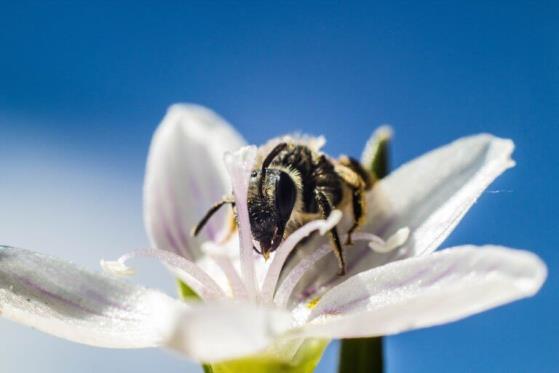Pollination biologists from Western Sydney University studied apple crops in New South Wales orchards to evaluate the insect abundance and efficiency. They found that rare, native Exoneura (reed bees) and halictid bees were the most efficient apple pollinators. Stingless bees had low pollination efficiency, but high abundance and effectiveness. Bees that contact the stigmas deposit more pollen per visit than non-bees. Native stingless bee, Tetragonula carbonaria, foragers carried the most loose apple pollen on their bodies, followed by honey bees, but most individual insects (52%) visiting flowers carried no apple pollen at all. Bees carried more apple pollen on their bodies than all non-bee insects. In addition, when contacting flower stigmas, bees deposited more pollen per visit than non-bees.
Pink Lady apples require pollination, because closed controls set zero fruits. Fruit set also required repeated polli-nator visits, because flowers restricted to a single insect visit rarely set fruit. Pollination deficits were detected in both study regions, wherein open treatments set fewer fruits than hand-pollination treatments. Pollination ser-vices were predominantly provided by honey bees (97%) in one region (Orange), but in a second region (Bilpin), honey bees (60%) were complemented strongly by wild stingless bees (35%). Hence, in Bilpin, native bee pollina-tion services may buffer predicted decreases in honey bee populations, should the Varroa mite become estab-lished in Australian agro-environments.
Olivia M. Bernauer, Simon M. Tierney, James M. Cook. Efficiency and effectiveness of native bees and honey bees as pollinators of apples in New South Wales orchards. Agriculture, Ecosystems & Environment, Volume 337, 2022, 108063, https://doi.org/10.1016/j.agee.2022.108063.

